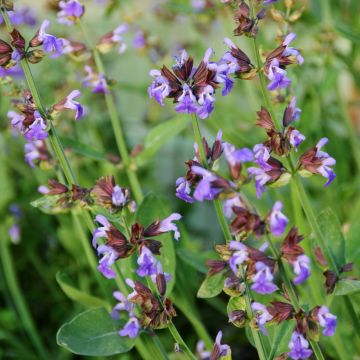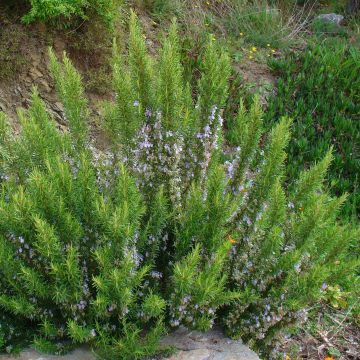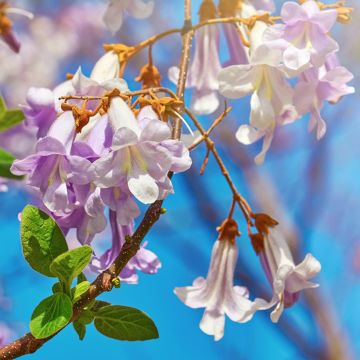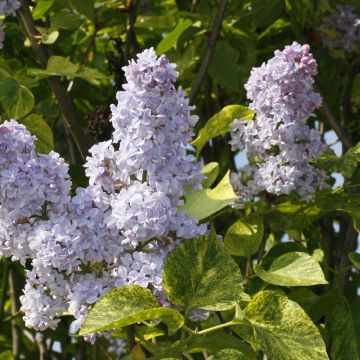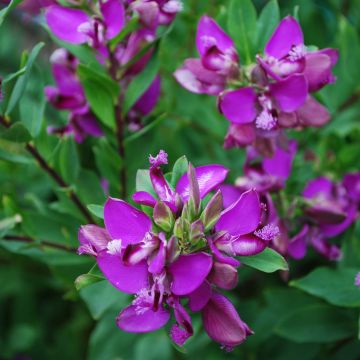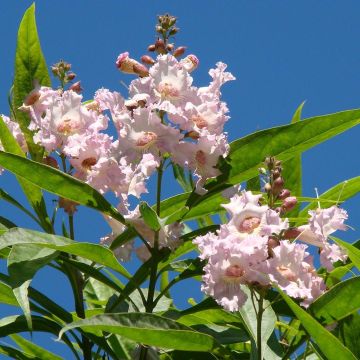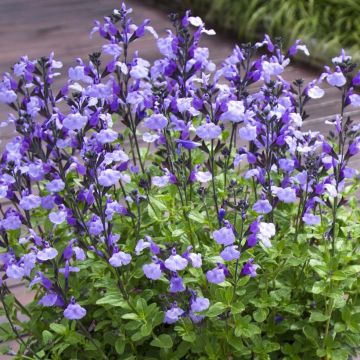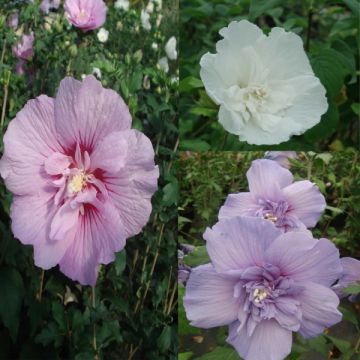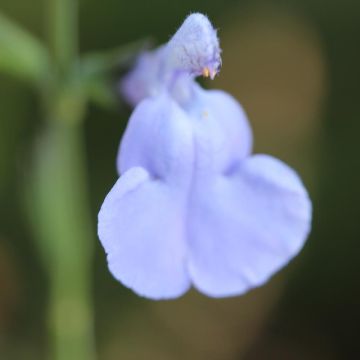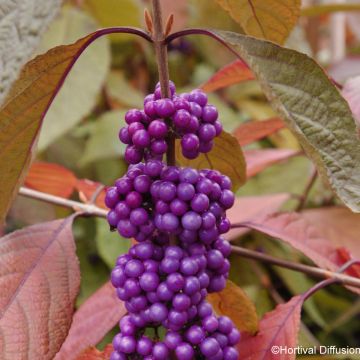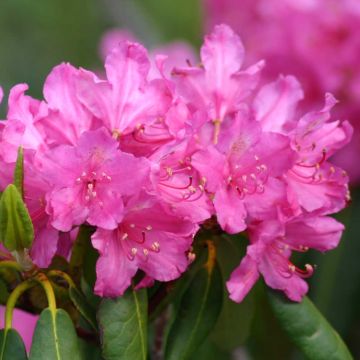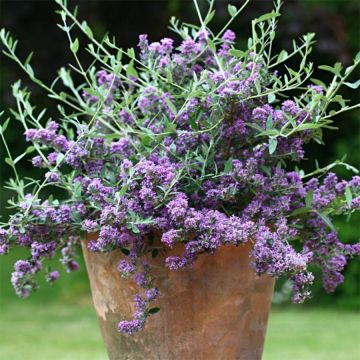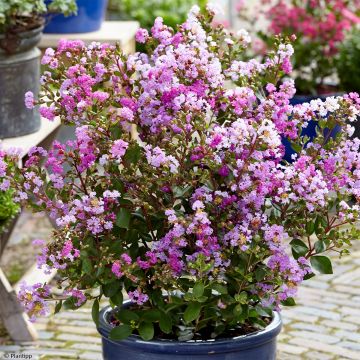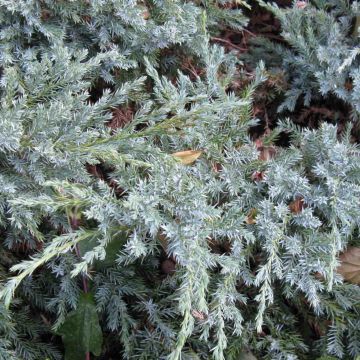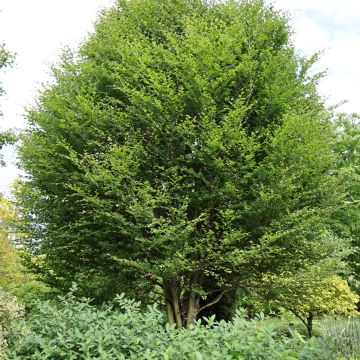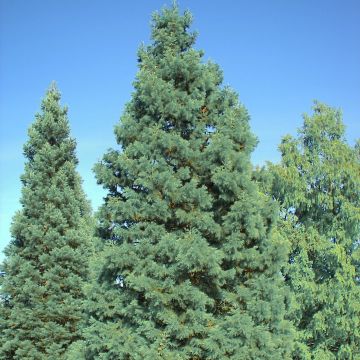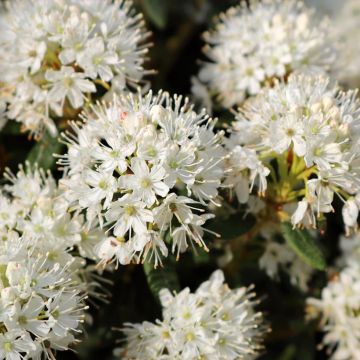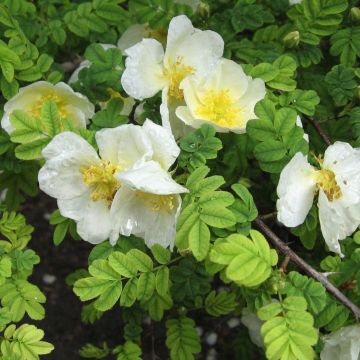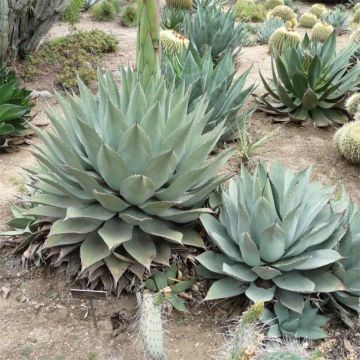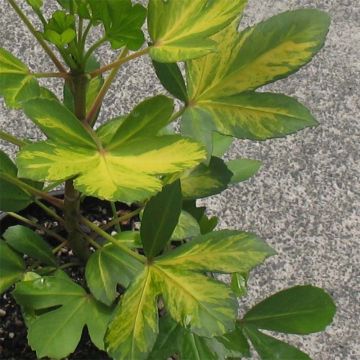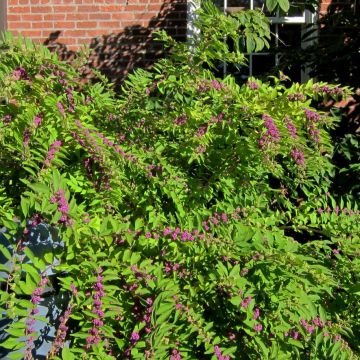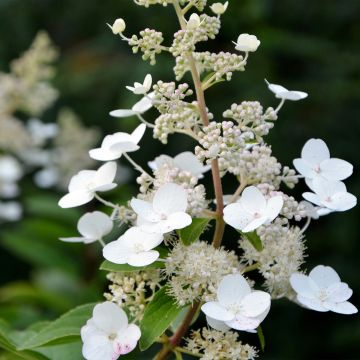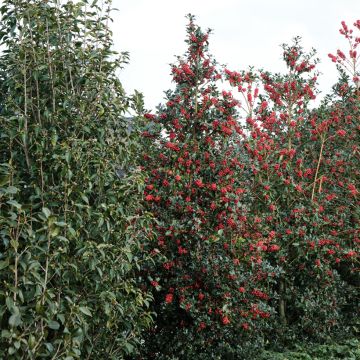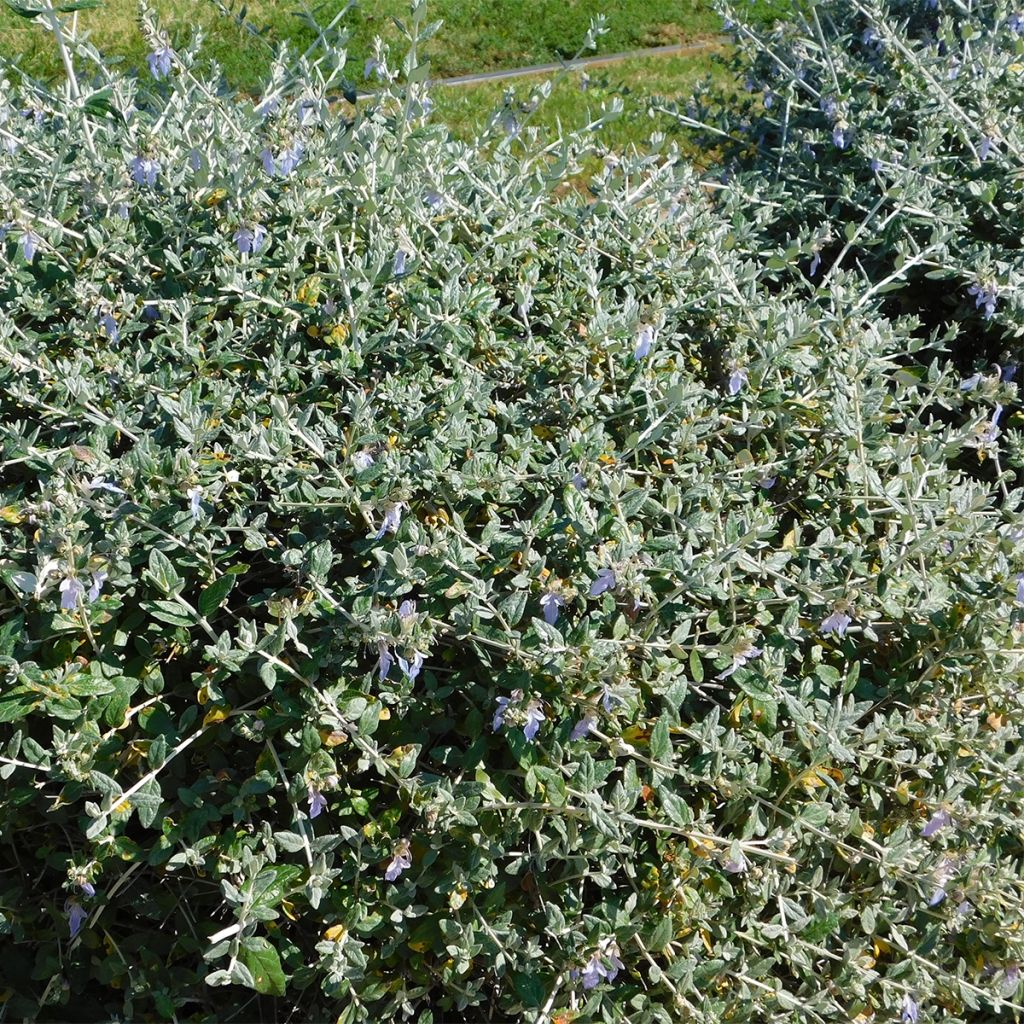

Teucrium fruticans - Tree Germander
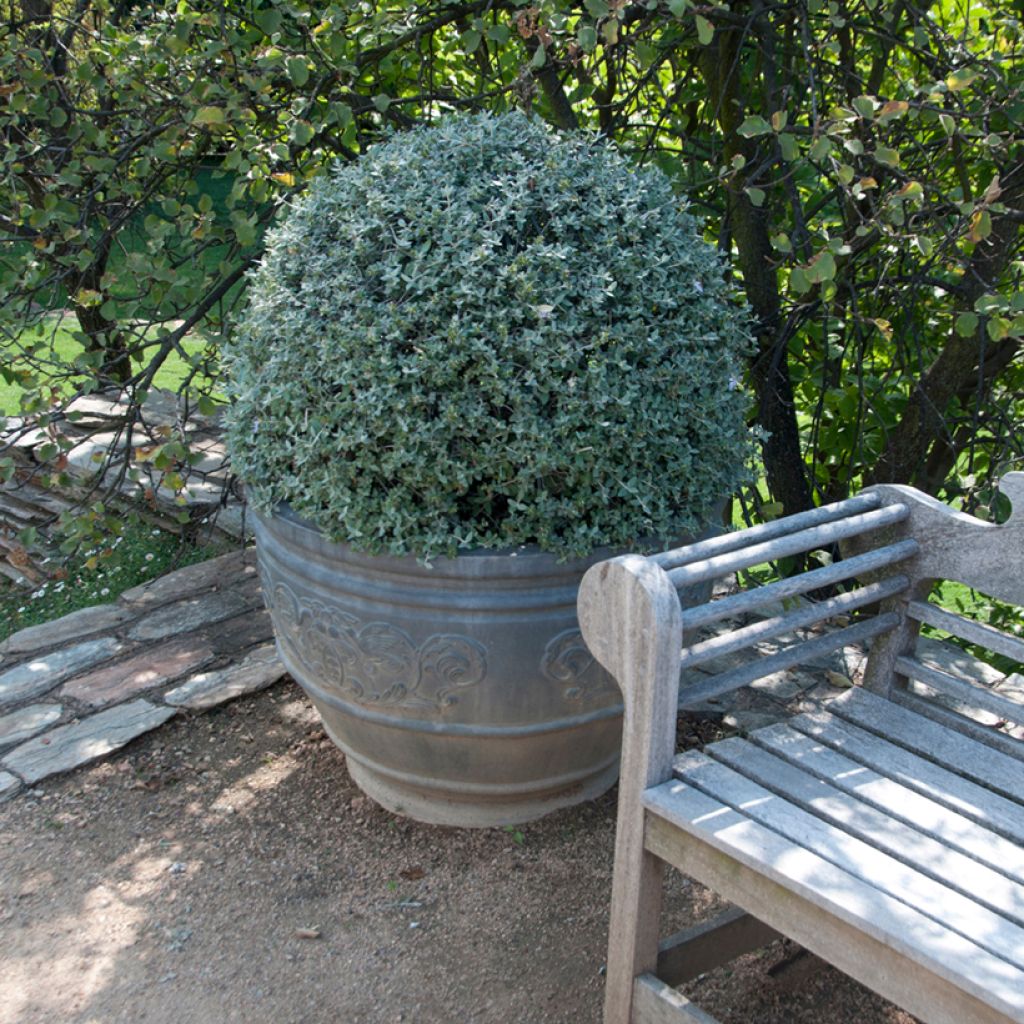

Teucrium fruticans - Tree Germander
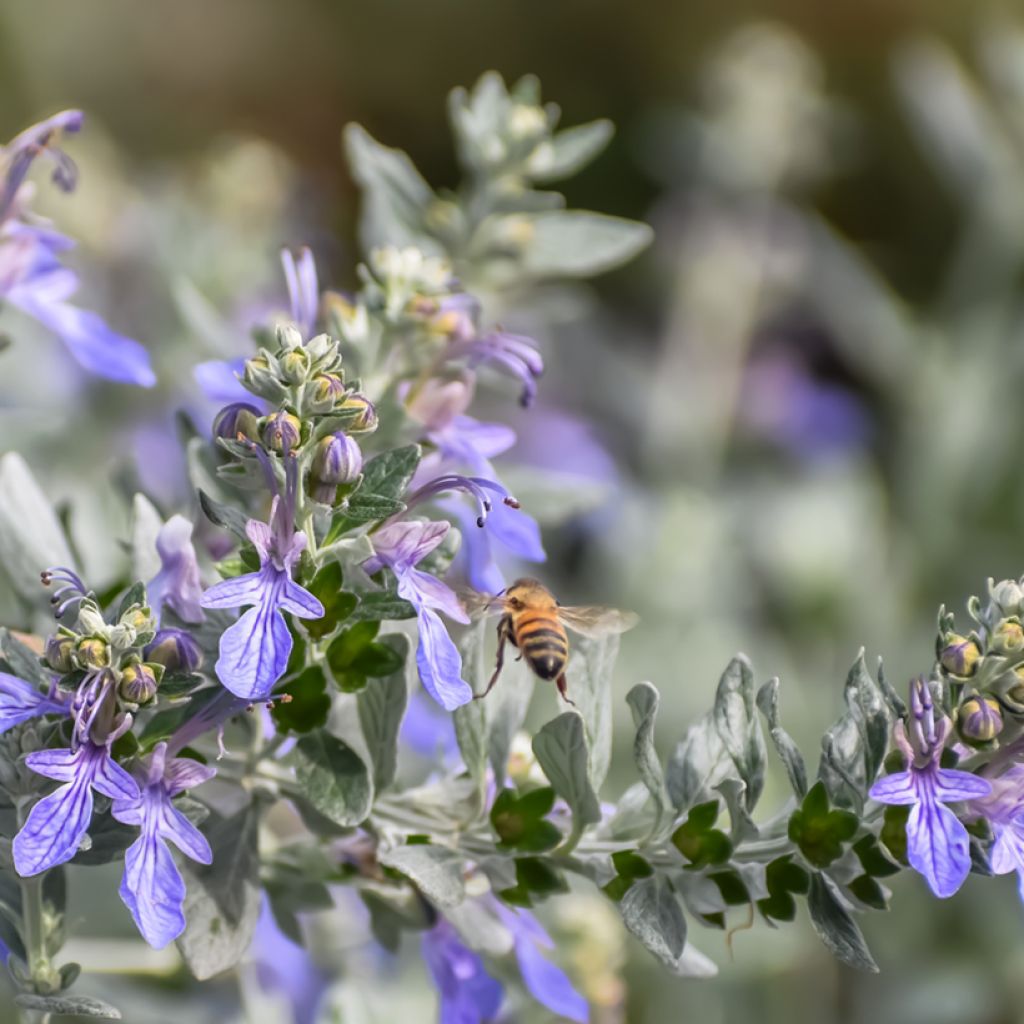

Teucrium fruticans - Tree Germander
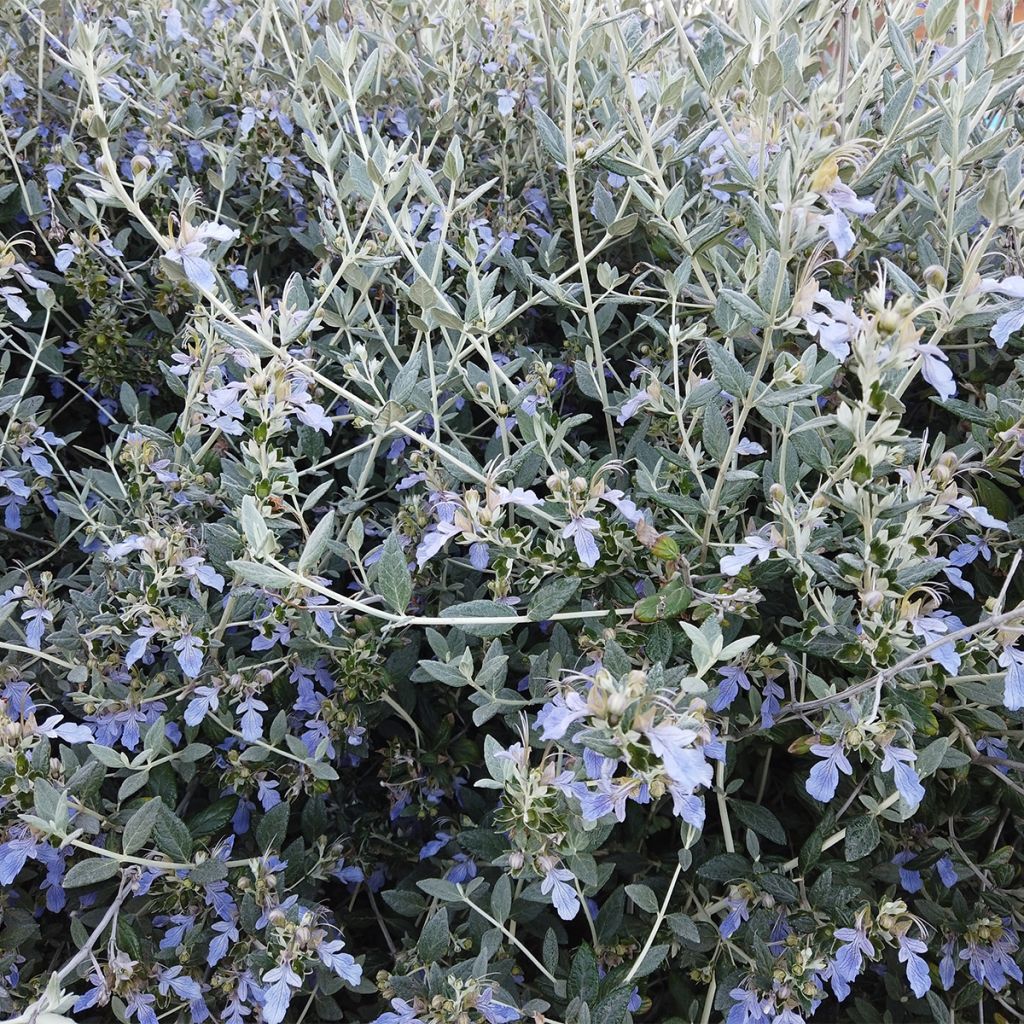

Teucrium fruticans - Tree Germander
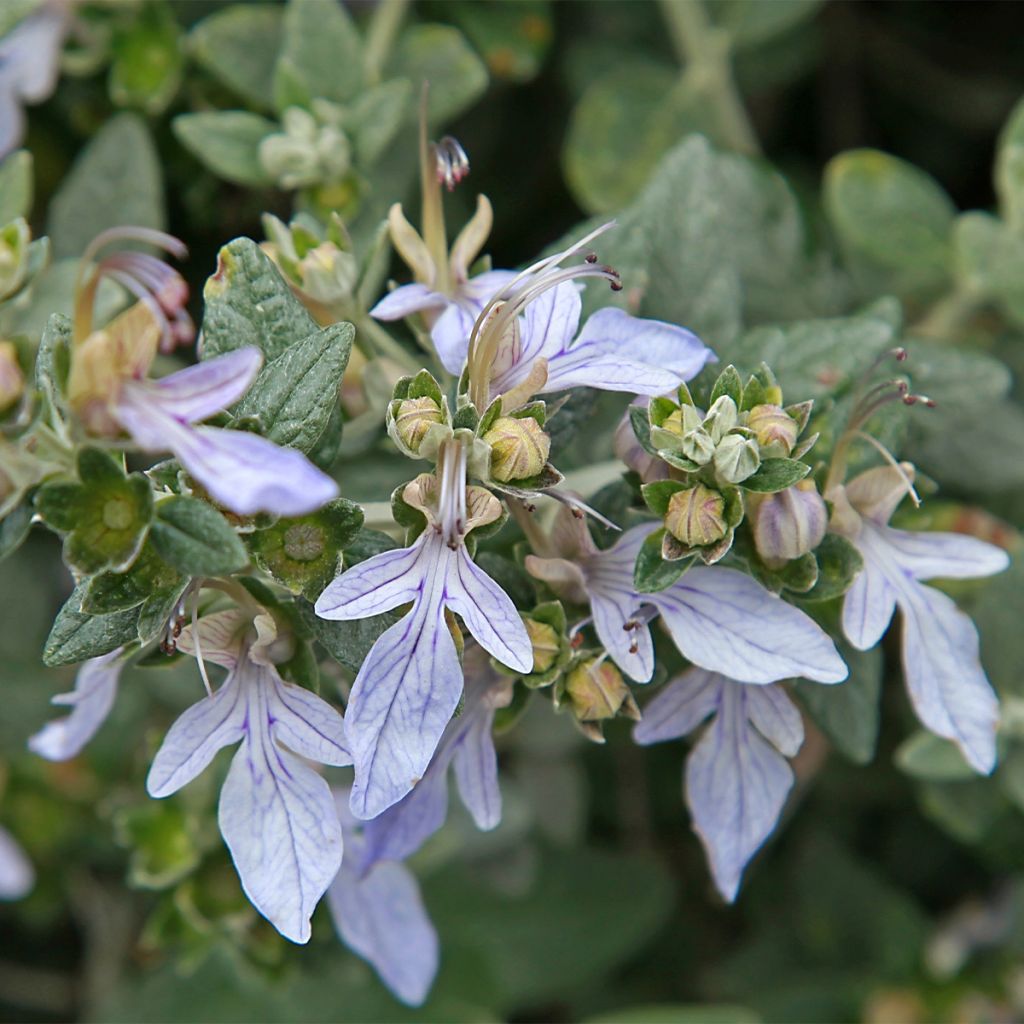

Teucrium fruticans - Tree Germander
Teucrium fruticans - Tree Germander
Teucrium fruticans
Tree Germander
The recovery is good.
Sylvie, 23/03/2024
Why not try an alternative variety in stock?
View all →This plant carries a 24 months recovery warranty
More information
We guarantee the quality of our plants for a full growing cycle, and will replace at our expense any plant that fails to recover under normal climatic and planting conditions.
From €5.90 for pickup delivery and €6.90 for home delivery
Express home delivery from €8.90.
From €5.90 for pickup delivery and €6.90 for home delivery
Express home delivery from €8.90.
Delivery to Corse prohibited: UE law prohibits the import of this plant from mainland France to Corse as part of the fight against Xylella fastidiosa. Please accept our sincere apologies.
More information

Does this plant fit my garden?
Set up your Plantfit profile →
Description
The Bush Germander, in Latin Teucrium fruticans, is a small evergreen bush that is very interesting for coastal gardens and dry areas in not too cold climates. Its overall greyish foliage with almost white young stems is decorative all year round and aromatic to the touch. From spring to the end of summer, it produces small pale blue to mauve flowers, quite discreet, which bloom at the tips of the particularly dense foliage. When not pruned, it forms large dense and spreading masses, but it is more frequently used to form low hedges, as it tolerates pruning very well. Hardy up to -10°C or slightly more in very well-drained soil, it withstands wind and sea spray, as well as drought and is not afraid of arid soils.
Teucrium fruticans is a shrub from the Lamiaceae family, which includes many representatives with aromatic foliage, such as sage, mint, lavender, oregano, thyme, and lemon balm. It is native to southern Spain, southern Portugal, and Morocco. In France, this species is spontaneous on the hillsides of the Mediterranean coast, where it is also protected. In the wild, this Teucrium tends to spread in width, forming cushions 1.50m (4ft 11in) or more in height and 2m (6ft 7in) or more in width. This shrub is very decorative throughout the year, both for its foliage and its flowering. The small lanceolate leaves, 1 to 2cm (0.4 to 0.8in) wide and 2 to 3cm (0.8 to 1.2in) long, pointed at their tips, are dark green with a grey down on their upper surface and an almost white grey on their lower surface. Opposite decussate (arranged face to face, with each level offset by 90° (194 °F) from the previous one), they are born on young stems of the same colour as their lower surface, i.e., almost white. This harmony of colours is enhanced by the appearance of pale blue to mauve flowers, perfectly matching the foliage. These small flowers (about 2cm (0.8in)), which resemble certain wild orchids (such as the fascinating Fly Orchid), appear at the axil of the leaves at the tips of the young branches. Appearing from April in the Mediterranean region, a little later elsewhere in France, they persist until summer, or even the end of summer depending on the climatic zones, i.e., 4 to 6 months of continuous flowering!
This bush germander is a sun and arid soil plant, which has its place in a coastal garden, as well as in the Mediterranean region. In cooler regions, it can withstand urban areas, at the foot of a stone wall for example, which will protect it from cold wind. In too cold climates, it can be grown in a container and overwintered in a bright and cool room. A light annual pruning will then help to contain its dimensions. Aesthetically, it is a very interesting plant, one of the few that can blend into a "wild" garden thanks to its natural appearance, as well as in a very structured, contemporary, or French-style garden. Indeed, this Teucrium can be shaped as desired by pruning, for example, into a square hedge, as is frequently the case in the cities of the Midi, as well as into softer and rounded forms. It can easily be integrated into a topiary garden where it will bring its grey and blue tones, alongside classics of the genre with green leaves such as Lonicera nitida, the inevitable yews, and in southern gardens, the myrtles. In a Mediterranean garden, a multitude of combinations are possible, with rockroses, Escallonias, rosemary, or in a wild garden, at the foot of a mastic tree or strawberry tree, for example.
Report an error about the product description
Teucrium fruticans - Tree Germander in pictures
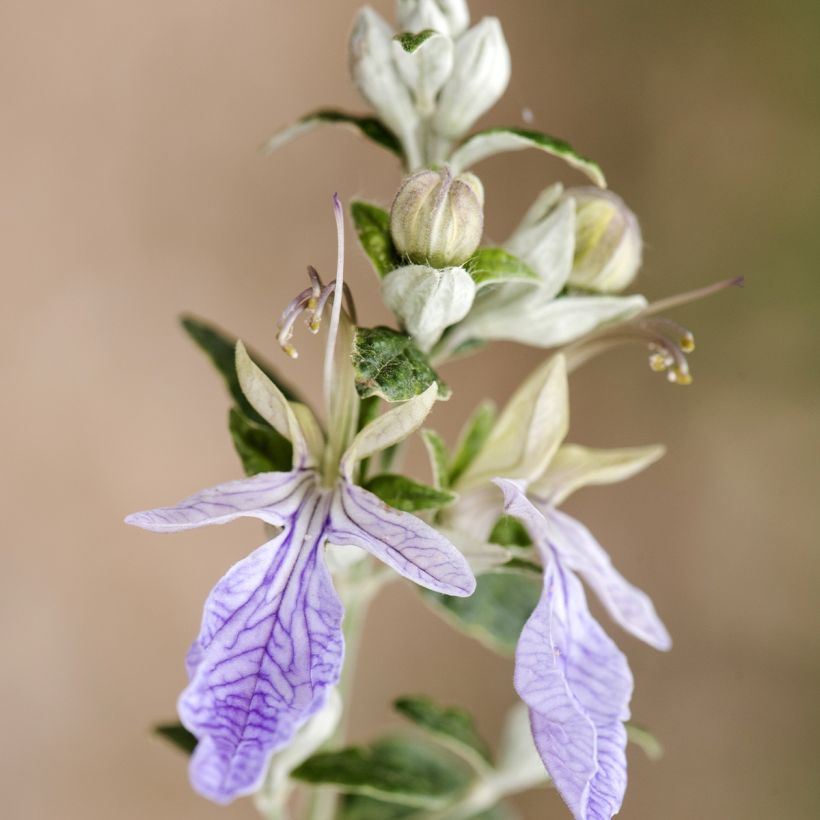

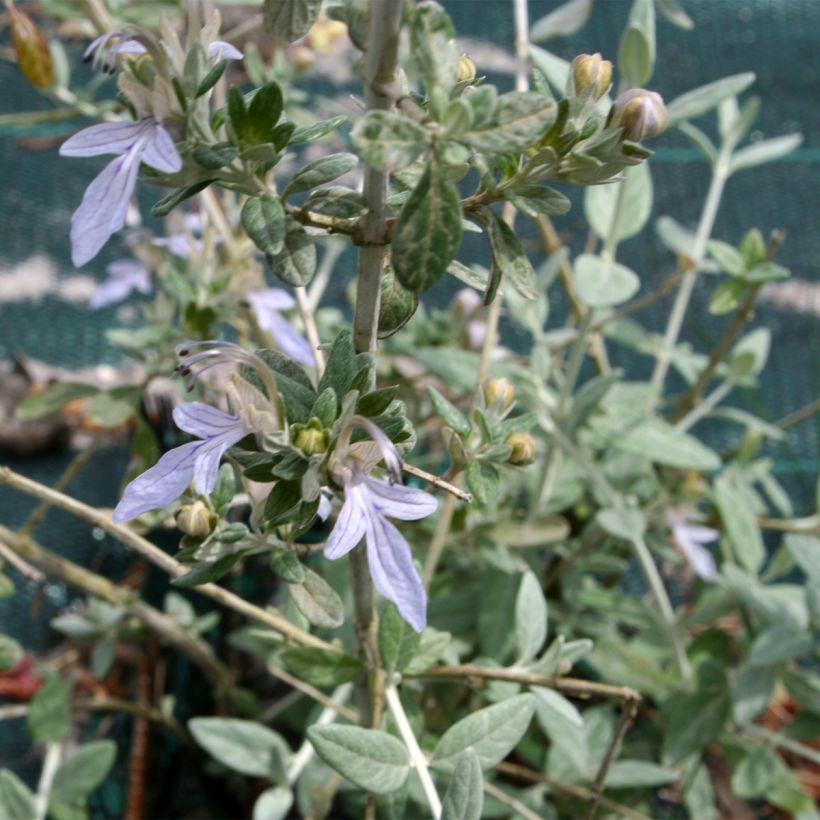

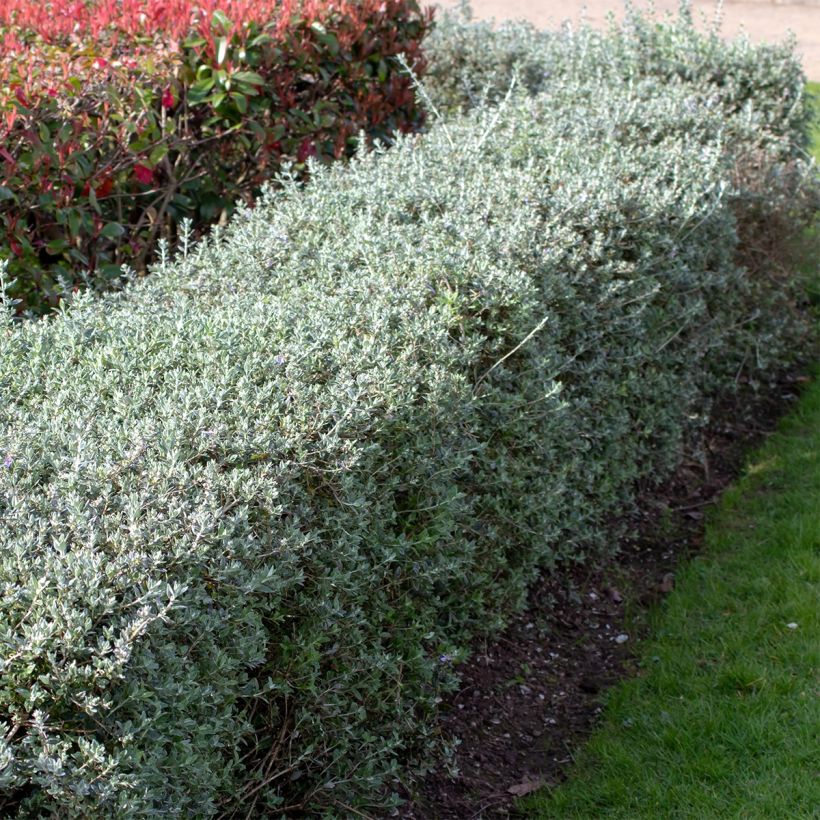

Plant habit
Flowering
Foliage
Botanical data
Teucrium
fruticans
Lamiaceae
Tree Germander
Mediterranean
Other Shrubs
Planting and care
Teucrium fruticans is a plant from a typically Mediterranean climate, perfectly adapted to long, dry and hot summers. It appreciates sunny exposures, sheltered from strong winds if the garden is located in a borderline hardiness zone. If the bush is planted in a very well-draining soil (stony, sandy or gravel-rich), it will withstand temperatures as low as -12°C (10.4 °F) at its peak, provided that temperatures quickly return to positive during the day.
It is not very demanding in terms of soil type as long as it is well-draining and it also tolerates limestone very well, but a neutral soil will also suit it. Once established, it perfectly withstands drought and can do without watering completely during summer in all our regions. In slightly colder regions, it is preferable to plant it in spring, while planting in October is recommended in our hot and dry regions in summer. It is an easy bush to grow. After flowering, shorten the branches that have bloomed by half. It tolerates and even appreciates pruning, including severe pruning, which allows it to rejuvenate and maintain a very bushy habit, which is an asset for container cultivation.
Planting period
Intended location
Care
-
, onOrder confirmed
Reply from on Promesse de fleurs
Haven't found what you were looking for?
Hardiness is the lowest winter temperature a plant can endure without suffering serious damage or even dying. However, hardiness is affected by location (a sheltered area, such as a patio), protection (winter cover) and soil type (hardiness is improved by well-drained soil).

Photo Sharing Terms & Conditions
In order to encourage gardeners to interact and share their experiences, Promesse de fleurs offers various media enabling content to be uploaded onto its Site - in particular via the ‘Photo sharing’ module.
The User agrees to refrain from:
- Posting any content that is illegal, prejudicial, insulting, racist, inciteful to hatred, revisionist, contrary to public decency, that infringes on privacy or on the privacy rights of third parties, in particular the publicity rights of persons and goods, intellectual property rights, or the right to privacy.
- Submitting content on behalf of a third party;
- Impersonate the identity of a third party and/or publish any personal information about a third party;
In general, the User undertakes to refrain from any unethical behaviour.
All Content (in particular text, comments, files, images, photos, videos, creative works, etc.), which may be subject to property or intellectual property rights, image or other private rights, shall remain the property of the User, subject to the limited rights granted by the terms of the licence granted by Promesse de fleurs as stated below. Users are at liberty to publish or not to publish such Content on the Site, notably via the ‘Photo Sharing’ facility, and accept that this Content shall be made public and freely accessible, notably on the Internet.
Users further acknowledge, undertake to have ,and guarantee that they hold all necessary rights and permissions to publish such material on the Site, in particular with regard to the legislation in force pertaining to any privacy, property, intellectual property, image, or contractual rights, or rights of any other nature. By publishing such Content on the Site, Users acknowledge accepting full liability as publishers of the Content within the meaning of the law, and grant Promesse de fleurs, free of charge, an inclusive, worldwide licence for the said Content for the entire duration of its publication, including all reproduction, representation, up/downloading, displaying, performing, transmission, and storage rights.
Users also grant permission for their name to be linked to the Content and accept that this link may not always be made available.
By engaging in posting material, Users consent to their Content becoming automatically accessible on the Internet, in particular on other sites and/or blogs and/or web pages of the Promesse de fleurs site, including in particular social pages and the Promesse de fleurs catalogue.
Users may secure the removal of entrusted content free of charge by issuing a simple request via our contact form.
The flowering period indicated on our website applies to countries and regions located in USDA zone 8 (France, the United Kingdom, Ireland, the Netherlands, etc.)
It will vary according to where you live:
- In zones 9 to 10 (Italy, Spain, Greece, etc.), flowering will occur about 2 to 4 weeks earlier.
- In zones 6 to 7 (Germany, Poland, Slovenia, and lower mountainous regions), flowering will be delayed by 2 to 3 weeks.
- In zone 5 (Central Europe, Scandinavia), blooming will be delayed by 3 to 5 weeks.
In temperate climates, pruning of spring-flowering shrubs (forsythia, spireas, etc.) should be done just after flowering.
Pruning of summer-flowering shrubs (Indian Lilac, Perovskia, etc.) can be done in winter or spring.
In cold regions as well as with frost-sensitive plants, avoid pruning too early when severe frosts may still occur.
The planting period indicated on our website applies to countries and regions located in USDA zone 8 (France, United Kingdom, Ireland, Netherlands).
It will vary according to where you live:
- In Mediterranean zones (Marseille, Madrid, Milan, etc.), autumn and winter are the best planting periods.
- In continental zones (Strasbourg, Munich, Vienna, etc.), delay planting by 2 to 3 weeks in spring and bring it forward by 2 to 4 weeks in autumn.
- In mountainous regions (the Alps, Pyrenees, Carpathians, etc.), it is best to plant in late spring (May-June) or late summer (August-September).
The harvesting period indicated on our website applies to countries and regions in USDA zone 8 (France, England, Ireland, the Netherlands).
In colder areas (Scandinavia, Poland, Austria...) fruit and vegetable harvests are likely to be delayed by 3-4 weeks.
In warmer areas (Italy, Spain, Greece, etc.), harvesting will probably take place earlier, depending on weather conditions.
The sowing periods indicated on our website apply to countries and regions within USDA Zone 8 (France, UK, Ireland, Netherlands).
In colder areas (Scandinavia, Poland, Austria...), delay any outdoor sowing by 3-4 weeks, or sow under glass.
In warmer climes (Italy, Spain, Greece, etc.), bring outdoor sowing forward by a few weeks.

































